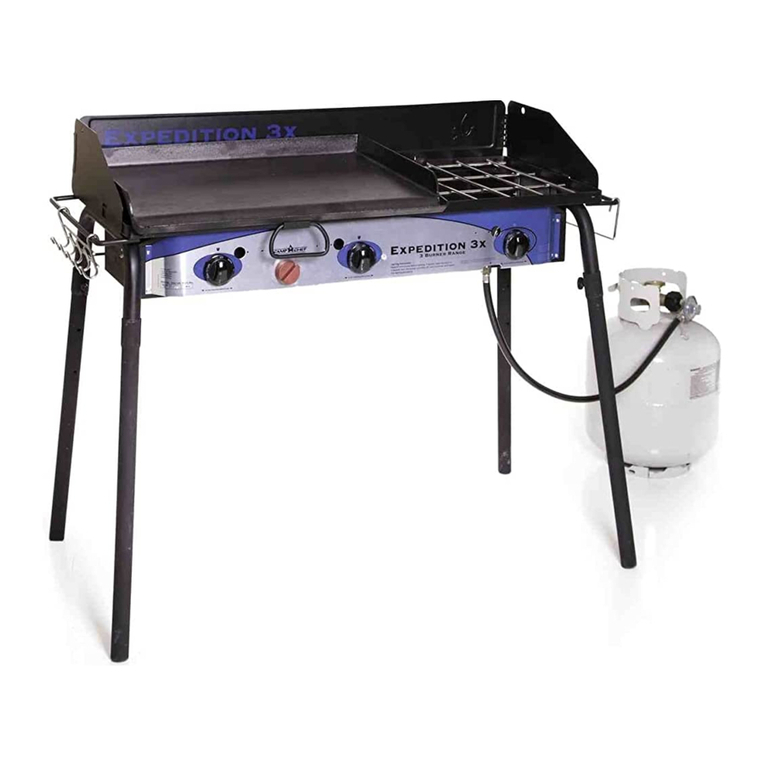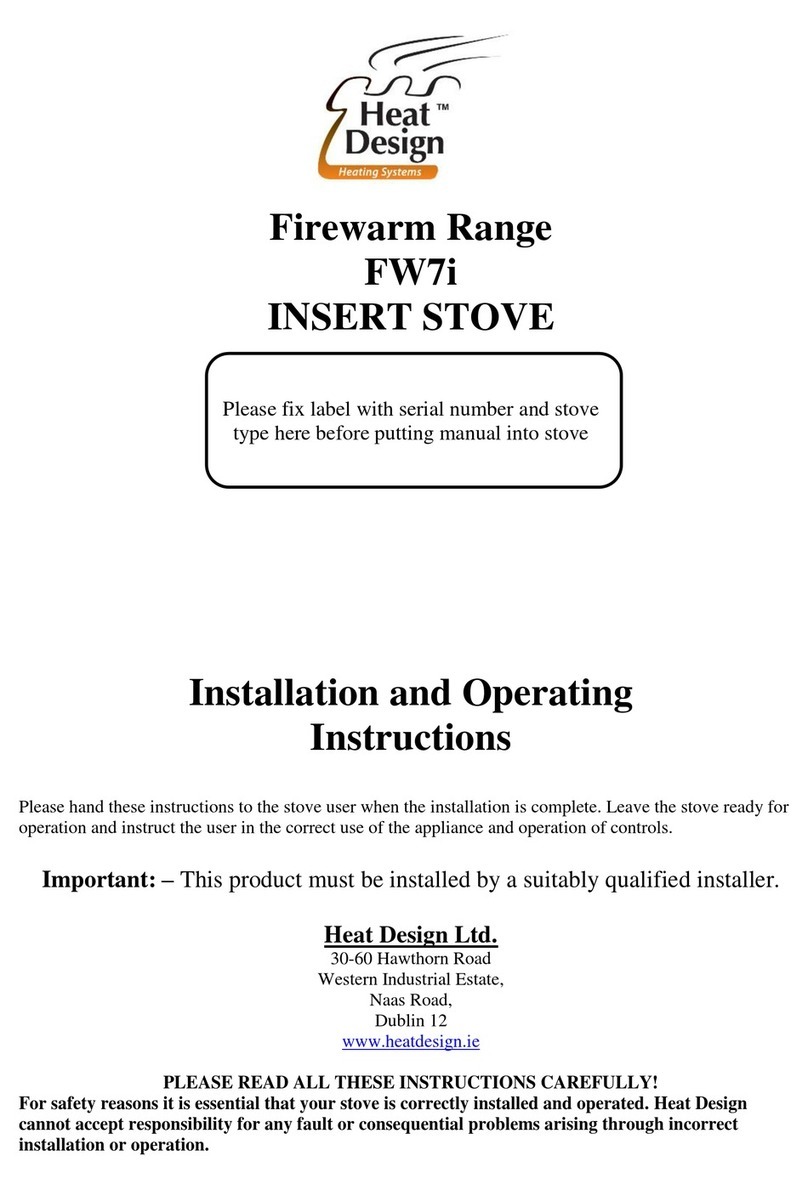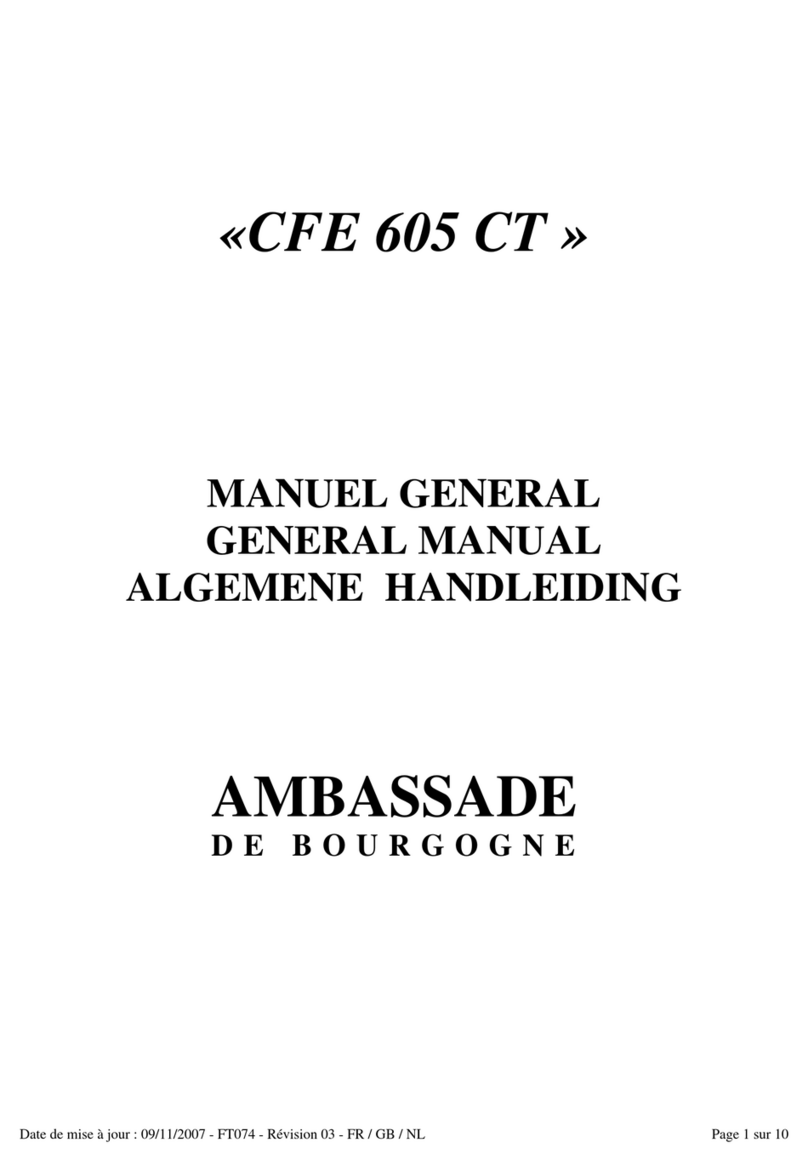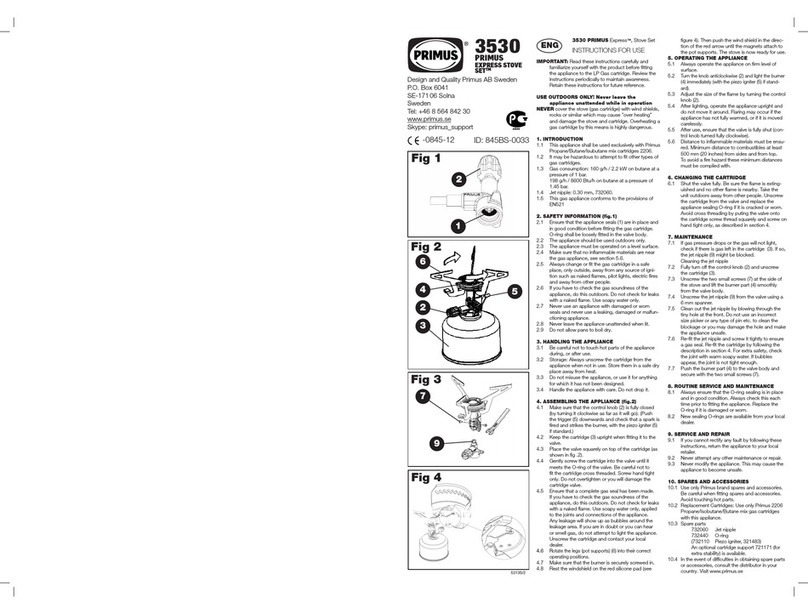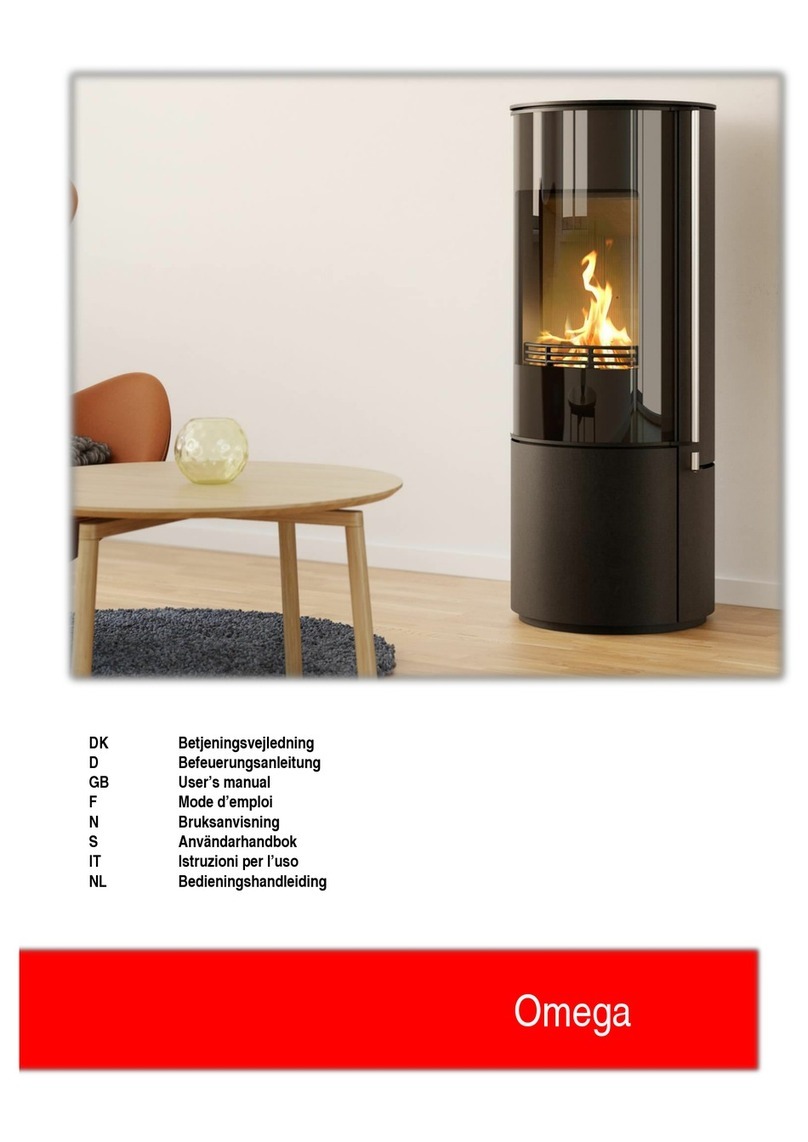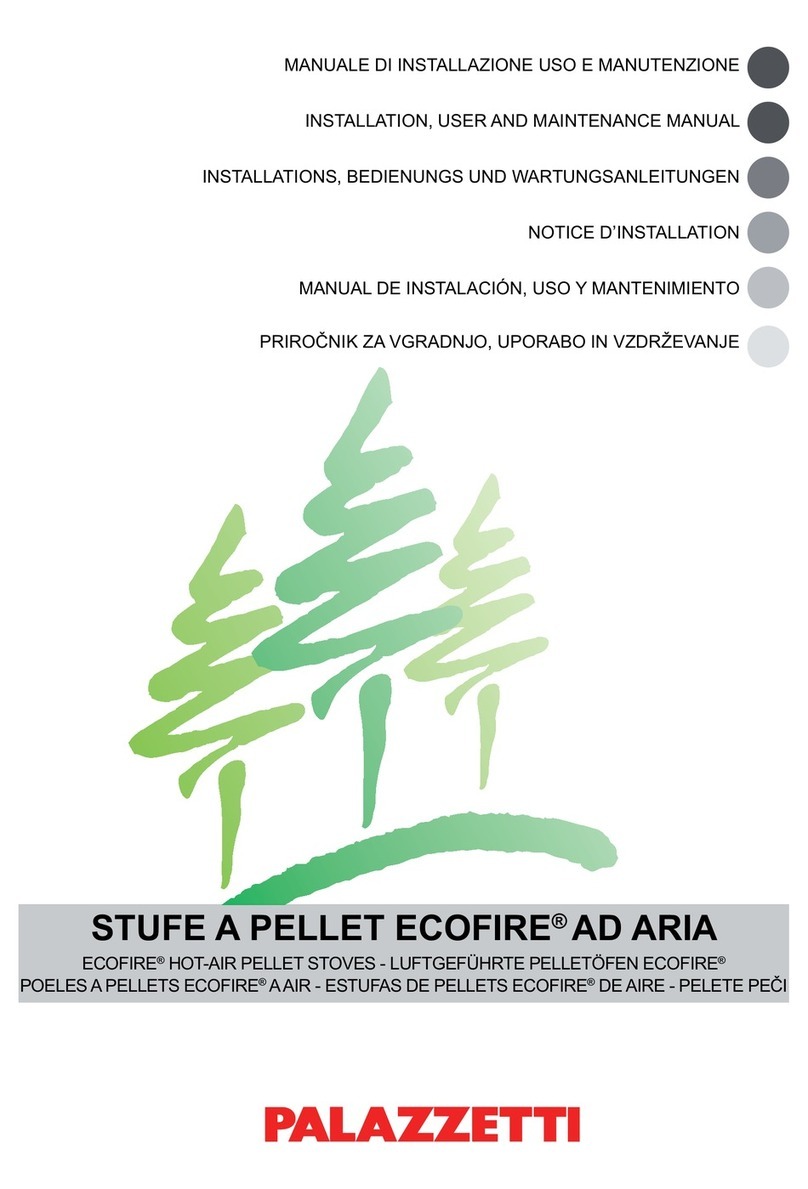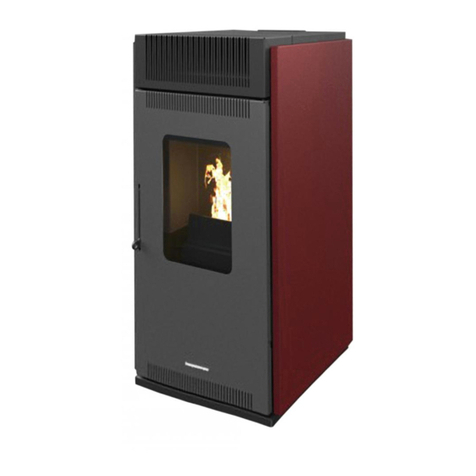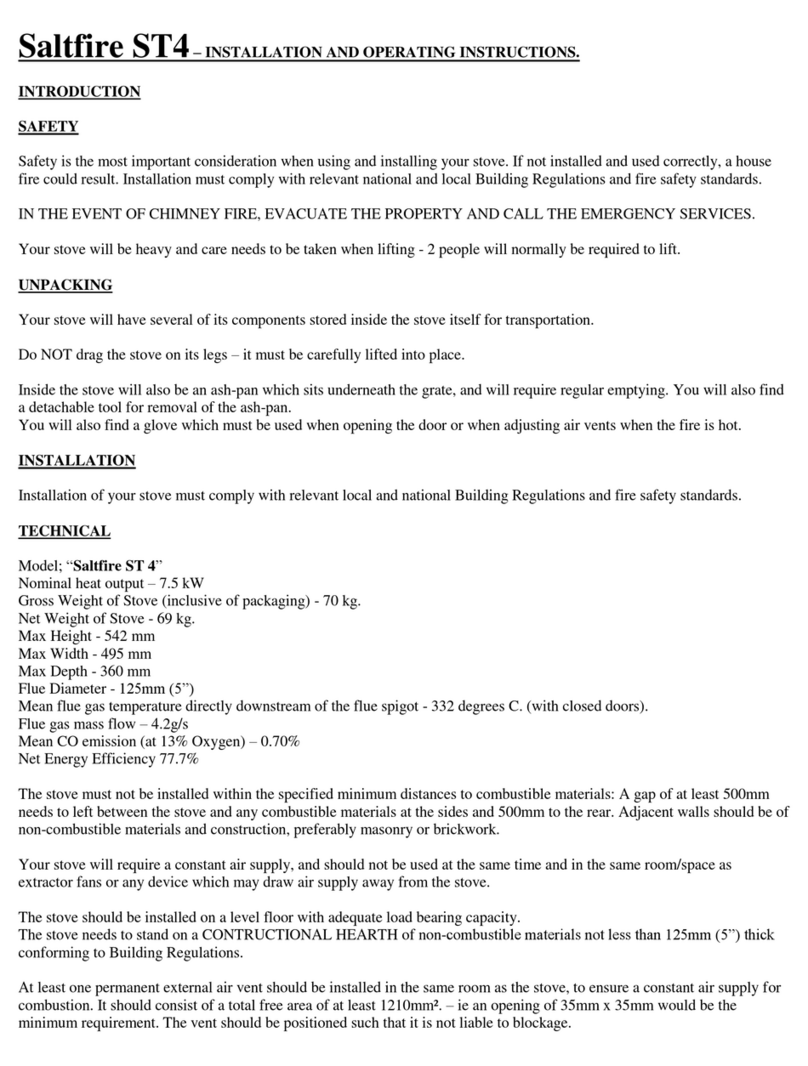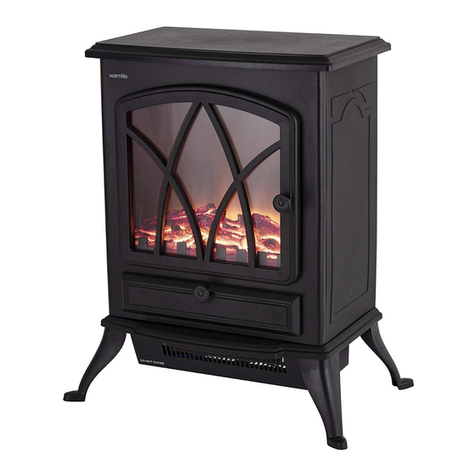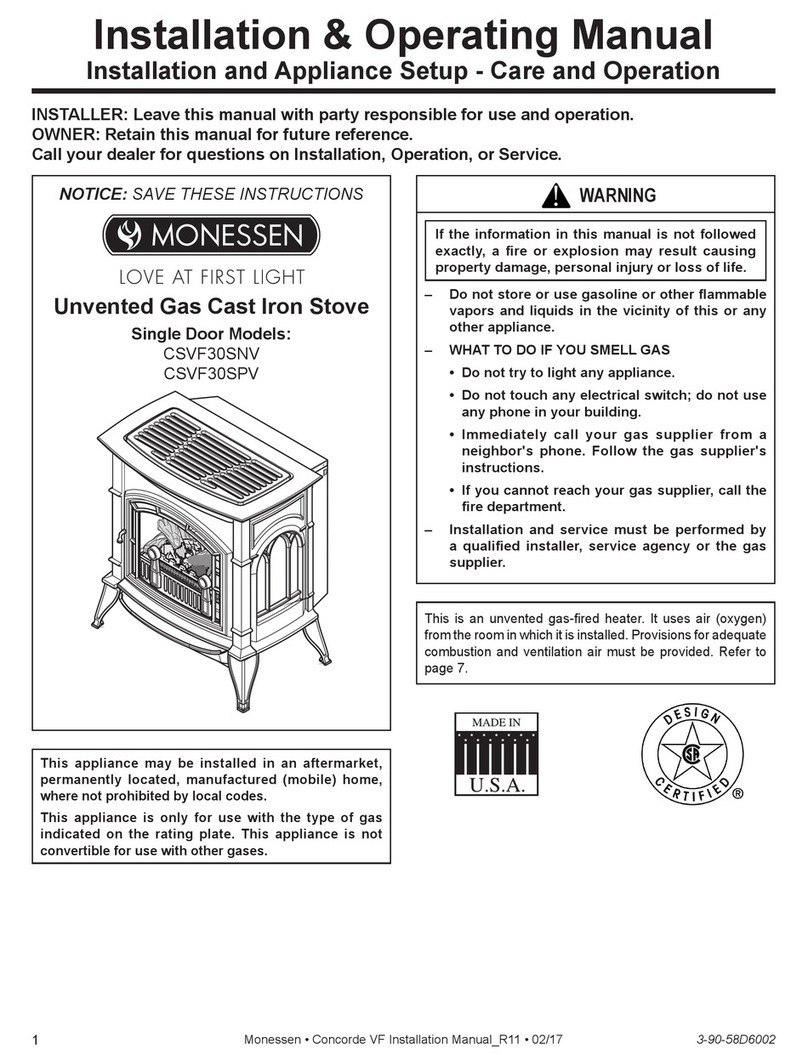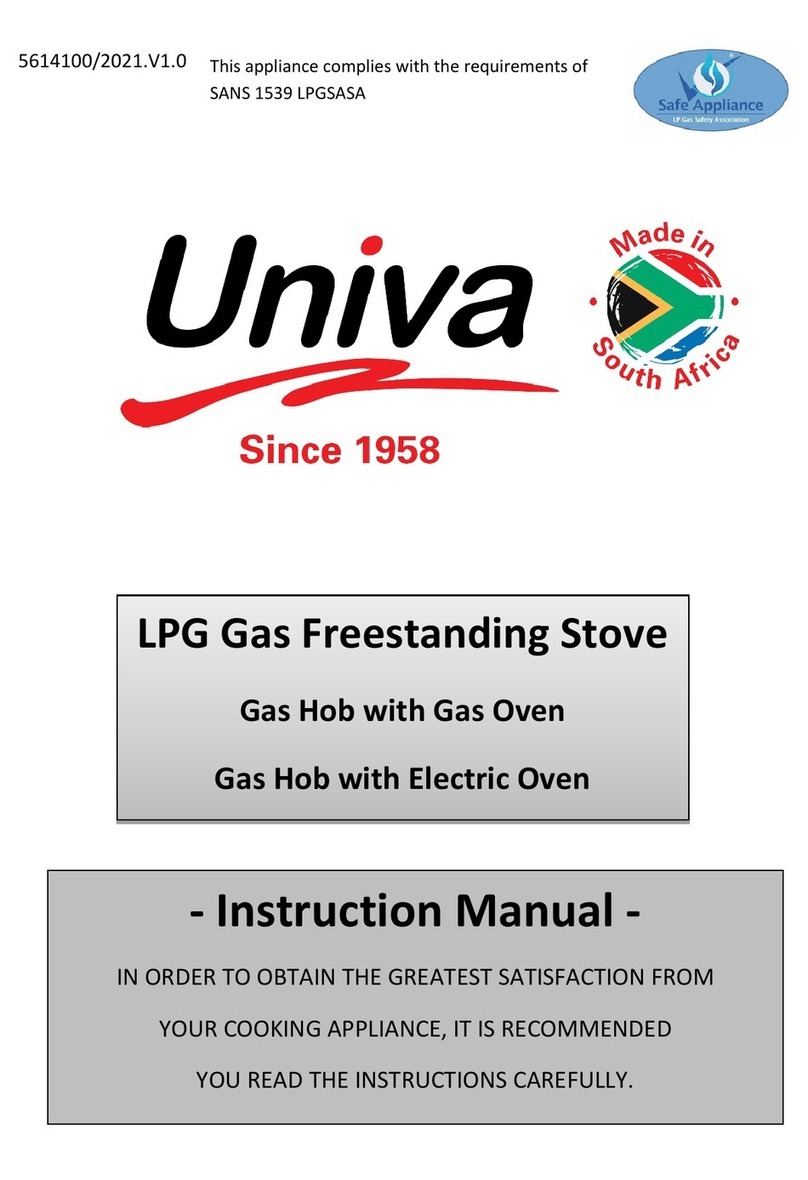Beforebeginning theinstallation, checkthat the
detailson therating platecorrespond tothegas
type and pressure to which the appliance will
be connected.
Ventilation
This appliance can be installed in a completely
sealedormechanically ventilatedhousewithout
extra ventilation and/or fume extraction.
General Balanced Flue Notes
There are many possibilities for installing
this Concentric Balanced Flue system into a
building, both Roof and Wall terminations are
possible, and the ue can either be built into
an existing chimney or a completely new ue
system may be constructed.
The system is based upon a Concentric Flue
system which utilises an inner ue of 100 or 130
mm diameter which passes through an outer ue
of 150 or 200 mm diameter. The ue gasses that
are the products of combustion of the re, pass
through the inner ue and are safely vented to
the outside environment. The gap between the
inner and outer ues is the channel by which the
stove is supplied with air for combustion.
These concentric ues terminate outside of the
property in a terminal, this terminal will keep the
expelled gasses and the fresh air for combustion
separate. It is important that the terminal is not
blocked, a suitable guard maybe required if the
terminal is located at a “Low” level (usually when
the terminal is within 2m of oor level).
The Balanced Flue gas appliance can be in-
stalled as an insertion into an existing or new
replace. If an existing Flue or Chimney is to be
utilised, then the installation engineer must be
consulted. If the chimney has been previously
usedit mustbeprofessionally cleanedandcerti-
ed as being sound and t for use.
The European CE approval on this appliance is
restricted to the Flue systems as specied by
the supplier, thus the appliance must only be
installed with the original ue system, no others
may be used
The gas re, in combination with the concentric
ue system , has been approved in accordance
with the European CE-norm for gas appliances
andmaythereforebe usedonlywiththis system.
The guarantee is invalidated if the appliance is
(completely or partially) installed using a differ-
ent system.
The concentric ue systems can be used with
either a newly-built or existing chimney.
These appliances are designed with the “Fire-
box” raised up off the ground level by the built
in “Base unit”.
Thustheseappliances require nospecialHearth
arrangements, as the oor will not get hot and is
protected by the steel construction of the “Base
unit”.
The appliance must not be tted against a rear
wall constructed from a combustible material;
a gap of 300mm should be given all round the
stovebeforecombustible materialsmaybeused
in the wall construction.
If the appliance has to be located in an open-
ing, a minimum clearance of 50mm should be
allowed to non-combustible materials.
If the appliance is located in a recess, then the
recess must have adequate ventilation, we rec-
ommend a minimum total vent area of 200 cm².
The stove must be located at least 280mm from
any combustible materials.
Appliance Fireplace Installation
After selecting the appliance location, install
a gas connection for the appliance in approxi-
mately the desired location of the gas controls.
The gas controls are already connected to the
appliance. The controls need to be located in




















